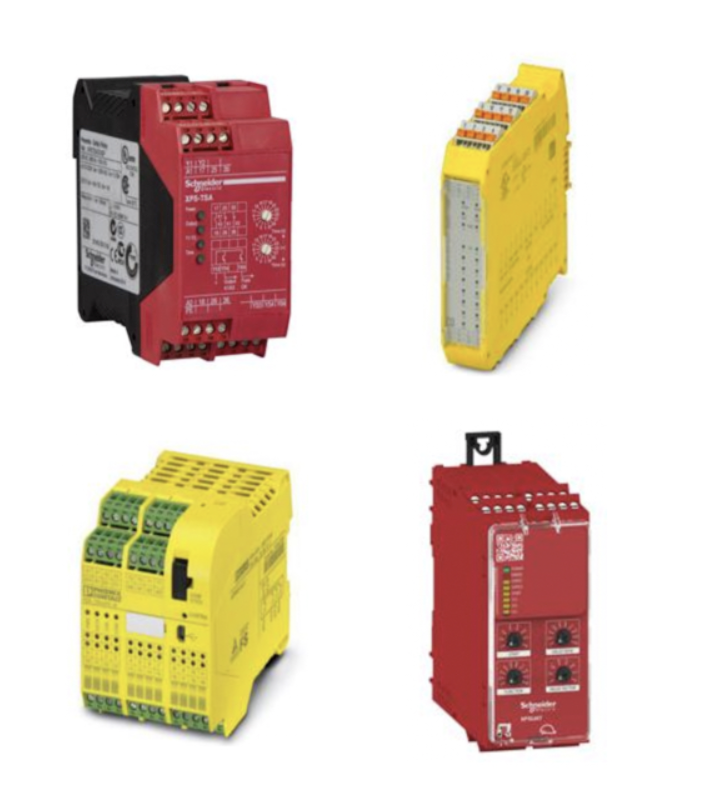Safety Relays

Safety relays are essential devices in industrial systems. They monitor safety-related functions and ensure the reliable operation of safety devices like emergency stop buttons, light curtains, and switches. Their operation is simple but effective: when a fault is detected or a safety condition is not met, the relays interrupt power to the hazardous motion or energy source. That's a direct line to overall system safety—conformance with the many applicable requirements and standards that encompass the various parts of safety applications.
The main job of safety relays is to ensure that safety circuits do just that: control the logic and the safe functioning of a machine. The relay is given commands via input signals, which tell it when a safety function has been activated—like an emergency stop, for example. When that happens, the safety relay opens its internal contacts so that any outputs controlling machine motion (or any sort of energy) are now safely disabled. What makes safety relays unique is that they do all this with a very high level of reliability.
More Information about Safety Relays
In more complex systems, safety relays may also include additional features such as contact extension, redundant channels, and fault diagnostics to meet higher safety requirements. These devices are designed to integrate seamlessly with existing machine control systems, providing safety functions like monitoring emergency stop circuits, safety gates, and other safety inputs. Their use helps meet the minimum safety requirements for machinery, reduce the risk of injury, and support safe operation across various industrial applications. With proper installation and monitoring, safety relays offer a critical layer of protection for both personnel and equipment in demanding plant environments.
FAQs
Do two hand controls on safety products perform in such a way that they are suitable for safety related applications?
Yes, two hand controls on safety products are designed to perform in such a way that they are suitable for safety-related applications by requiring simultaneous operation with both hands, reducing the risk of accidental activation and ensuring operator presence during hazardous machine functions.
Does the performance level of connected devices to safety relays have to perform in accordance with certain directives?
Yes, the performance level of devices connected to safety relays must perform in accordance with specific safety directives and standards, such as ISO 13849-1 or IEC 62061, to ensure compliance with required safety functions and risk reduction.
Safety Relays
In the event of a hazard, safety relays can help reduce the risk to a more acceptable level. They are commonly designed to be used in conjunction with other safety relays to increase the functionality and safety levels in work environments. The design and functionality of these relays is similar to regular relays, with a few exceptions. Like a common relay, safety relays use contacts that can be opened or closed. However, they also have the ability to evaluate and then control outputs based on those evaluations. If installed correctly, a safety relay will continue to function if a fault in a device occurs or if a fault is caused by a sensor. The redundant design features of safety relays allow for wiring errors, while still providing proper safety function.
It is very common to see safety relays being used around industrial machinery where safety is critical. Areas such as an industrial manufacturing plant environment, where there are a lot of motors, machinery and conveyors all operating simultaneously. Some of the devices that safety relays will be used with are emergency stops, three position devices, safety gates, pressure sensitive mats, contact strips, foot operated switches and time delay scenarios. Safety relays are tested much more vigorously than normal relays and have a much lower failure rate. The contacts are designed so that they can be completely disconnected, breaking both sides of the power connection as opposed to just one, like many normal relays.

